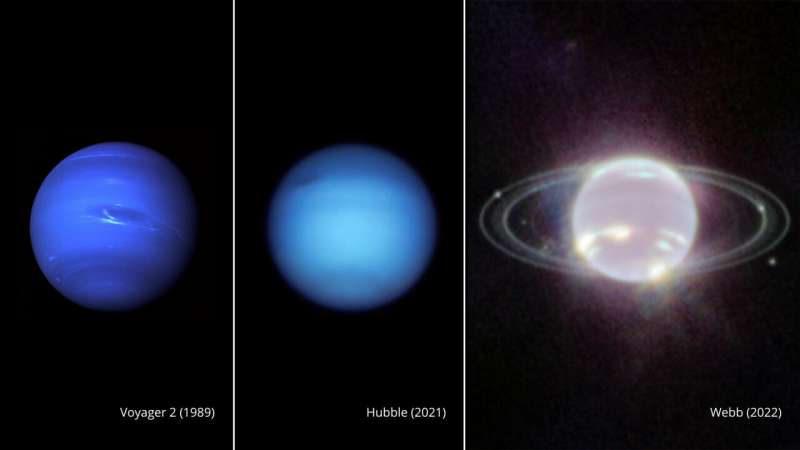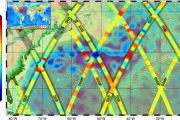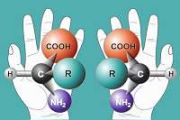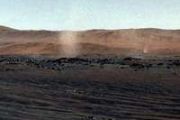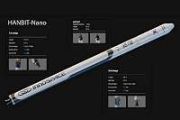
Copernical Team
Juno will perform close flyby of Jupiter's icy moon Europa
 On Thursday, Sept. 29, at 2:36 a.m. PDT (5:36 a.m. EDT), NASA's Juno spacecraft will come within 222 miles (358 kilometers) of the surface of Jupiter's ice-covered moon, Europa. The solar-powered spacecraft is expected to obtain some of the highest-resolution images ever taken of portions of Europa's surface, as well as collect valuable data on the moon's interior, surface composition, and ionos
On Thursday, Sept. 29, at 2:36 a.m. PDT (5:36 a.m. EDT), NASA's Juno spacecraft will come within 222 miles (358 kilometers) of the surface of Jupiter's ice-covered moon, Europa. The solar-powered spacecraft is expected to obtain some of the highest-resolution images ever taken of portions of Europa's surface, as well as collect valuable data on the moon's interior, surface composition, and ionos Planetary-scale 'heat wave' discovered in Jupiter's atmosphere
 An unexpected 'heat wave' of 700 degrees Celsius, extending 130,000 kilometres (10 Earth diameters) in Jupiter's atmosphere, has been discovered. James O'Donoghue, of the Japanese Aerospace Exploration Agency (JAXA), has presented the results this week at the Europlanet Science Congress (EPSC) 2022 in Granada.
Jupiter's atmosphere, famous for its characteristic multicoloured vortices, is a
An unexpected 'heat wave' of 700 degrees Celsius, extending 130,000 kilometres (10 Earth diameters) in Jupiter's atmosphere, has been discovered. James O'Donoghue, of the Japanese Aerospace Exploration Agency (JAXA), has presented the results this week at the Europlanet Science Congress (EPSC) 2022 in Granada.
Jupiter's atmosphere, famous for its characteristic multicoloured vortices, is a Advanced Photon Source helps illuminate the journey of a 4 billion-year-old asteroid
 A year ago, scientists got their first look at material gathered from nearby asteroid 162173 Ryugu. Now the results of those studies have been revealed, and they shed light on the history of our solar system and the long trek of this cosmic wanderer.
At its closest orbit, asteroid 162173 Ryugu is only about 60,000 miles from Earth. That's only a quarter of the distance to the moon. But acc
A year ago, scientists got their first look at material gathered from nearby asteroid 162173 Ryugu. Now the results of those studies have been revealed, and they shed light on the history of our solar system and the long trek of this cosmic wanderer.
At its closest orbit, asteroid 162173 Ryugu is only about 60,000 miles from Earth. That's only a quarter of the distance to the moon. But acc Asteroid's origins determined using sample return analysis
 The first analysis of samples from the asteroid Ryugu returned to Earth by the Japan Aerospace Exploration Agency's Hayabusa2 spacecraft offers new insights into Ryugu's formation history.
Laboratory analysis of 17 individual grains from the samples collected by Hayabusa2 found CO2-bearing water in an iron-nickel sulfide crystal, indicating the parent body formed in the outer Solar System,
The first analysis of samples from the asteroid Ryugu returned to Earth by the Japan Aerospace Exploration Agency's Hayabusa2 spacecraft offers new insights into Ryugu's formation history.
Laboratory analysis of 17 individual grains from the samples collected by Hayabusa2 found CO2-bearing water in an iron-nickel sulfide crystal, indicating the parent body formed in the outer Solar System, Join the challenge to explore the Moon
 Lunar enthusiasts of all ages are challenged to help identify features on the Moon that might pose a hazard to rovers or astronauts exploring the surface. The 2022 EXPLORE Lunar Data Challenge is focused on the Archytas Dome region, close to the Apollo 17 landing site where the last humans set foot on the Moon 50 years ago this December.
The Machine Learning Lunar Data Challenge is open to
Lunar enthusiasts of all ages are challenged to help identify features on the Moon that might pose a hazard to rovers or astronauts exploring the surface. The 2022 EXPLORE Lunar Data Challenge is focused on the Archytas Dome region, close to the Apollo 17 landing site where the last humans set foot on the Moon 50 years ago this December.
The Machine Learning Lunar Data Challenge is open to Analysis of particles of the asteroid Ryugu delivers surprising results
 Frank Brenker and his team are world leaders in a method that makes it possible to analyse the chemical composition of material in a three-dimensional and entirely non-destructive way and without complicated sample preparation - yet with a resolution of under 100 nanometres. Resolution expresses the smallest perceptible difference between two measured values. The method's long name is "Synchrotr
Frank Brenker and his team are world leaders in a method that makes it possible to analyse the chemical composition of material in a three-dimensional and entirely non-destructive way and without complicated sample preparation - yet with a resolution of under 100 nanometres. Resolution expresses the smallest perceptible difference between two measured values. The method's long name is "Synchrotr Beams of muons used to analyze the elemental composition of Asteroid Ryugu samples
 Stone samples brought back to Earth from asteroid Ryugu have had their elemental composition analyzed using an artificially generated muon beam from the particle accelerator in J-PARC. Researchers found a number of important elements needed to sustain life, including carbon, nitrogen, and oxygen, but also found the oxygen abundance relative to silicon in asteroid Ryugu was different from all met
Stone samples brought back to Earth from asteroid Ryugu have had their elemental composition analyzed using an artificially generated muon beam from the particle accelerator in J-PARC. Researchers found a number of important elements needed to sustain life, including carbon, nitrogen, and oxygen, but also found the oxygen abundance relative to silicon in asteroid Ryugu was different from all met SpaceX's Florida launch seen as far as New York, Massachusetts
 Elon Musk's SpaceX sent 52 more Starlink satellites into low-Earth orbit on Saturday as the company continues weekly launches to build out its constellation.
The Falcon 9 rocket lifted off from Space Launch Complex 40 at Cape Canaveral Space Force Station in Florida at 7:32 p.m., SpaceX said in a news release.
The first stage landed on the A Shortfall of Gravitas drone ship stati
Elon Musk's SpaceX sent 52 more Starlink satellites into low-Earth orbit on Saturday as the company continues weekly launches to build out its constellation.
The Falcon 9 rocket lifted off from Space Launch Complex 40 at Cape Canaveral Space Force Station in Florida at 7:32 p.m., SpaceX said in a news release.
The first stage landed on the A Shortfall of Gravitas drone ship stati NASA scraps Tuesday Moon launch due to storm
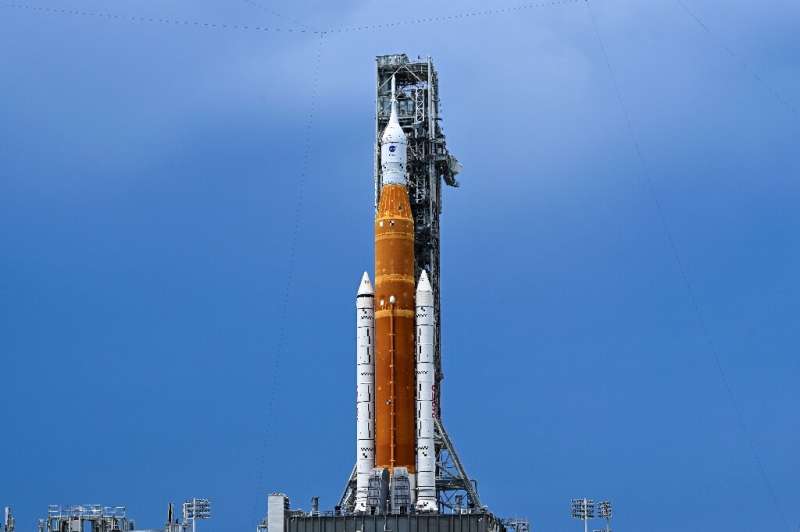
NASA has called off the scheduled Tuesday launch of its historic uncrewed mission to the Moon due to a tropical storm that is forecast to strengthen as it approaches Florida.
After two previously canceled launch attempts, NASA is weighing returning the Artemis 1 mission rocket to its assembly site under the threat of extreme weather.
"NASA is forgoing a launch opportunity... and preparing for rollback (from the launchpad), while continuing to watch the weather forecast associated with Tropical Storm Ian," it said on Saturday.
The US National Hurricane Center (NHC) said Ian is due to "rapidly intensify" over the weekend as it moves toward Florida, home to the Kennedy Space Center, from which the rocket is set to launch.
Neptune and rings shine in photos from new space telescope
